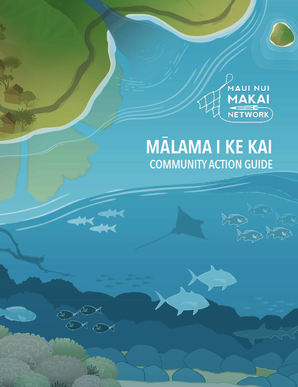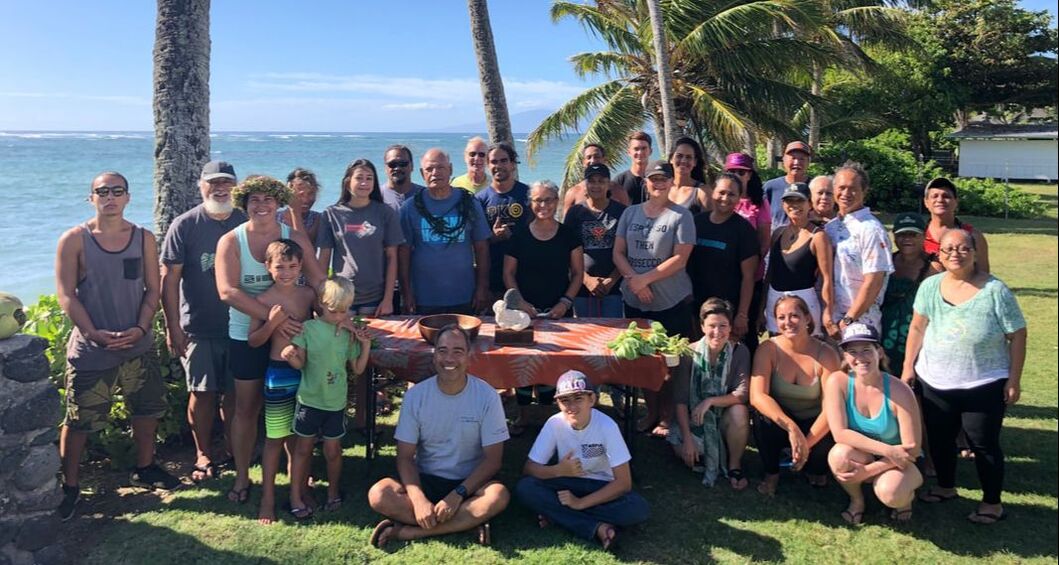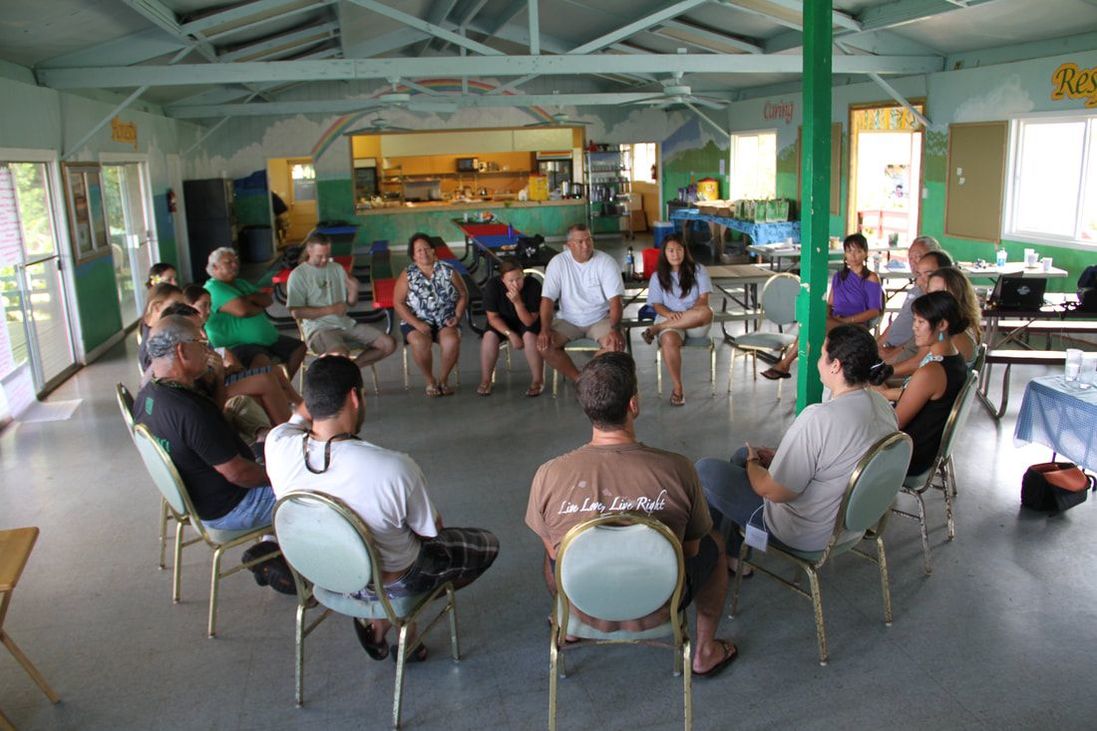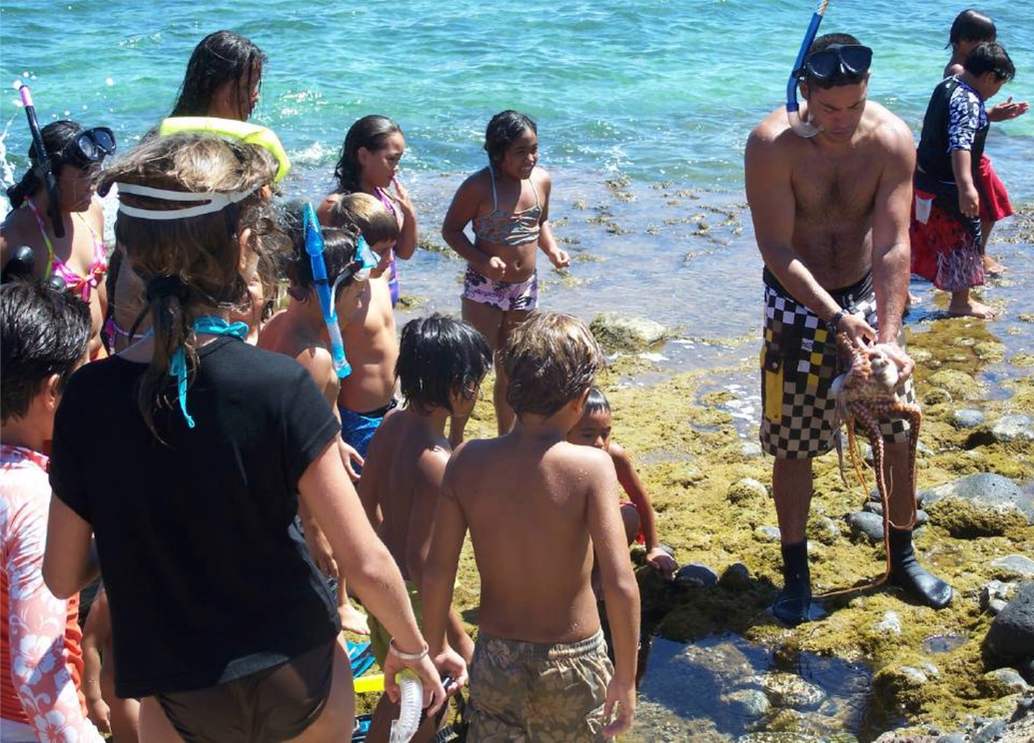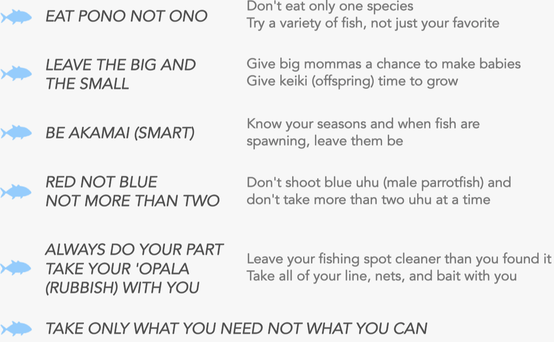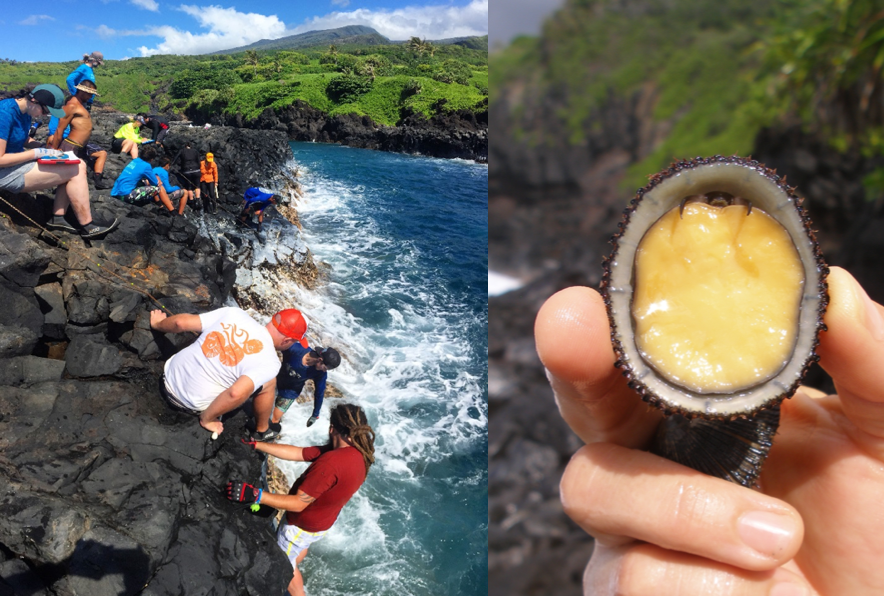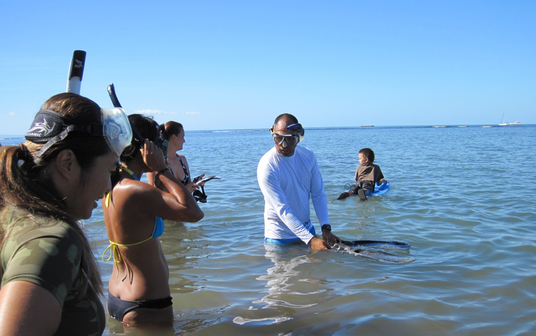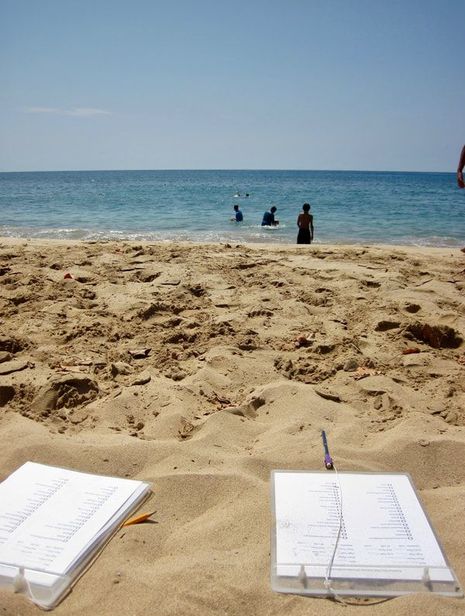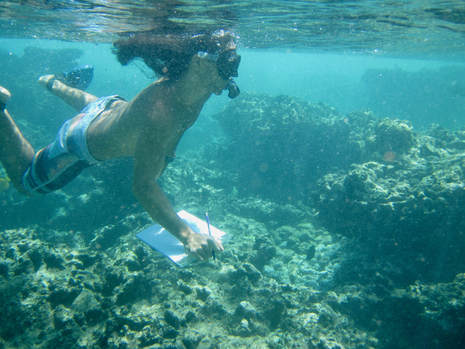|
One of the goals of the Maui Nui Makai Network is to grow community makai (seaward) management to every moku (district) in Maui Nui. Here we offer some tools and values that have helped our community groups organize and move into action towards makai management, and invite you to read and share this information with your communities. Please contact the Network Coordinator with any questions.
|
Mālama I Ke Kai: Community Action GuideThe Maui Nui Makai Network's Mālama I Ke Kai: Community Action Guide provides a proven, clear process for community groups interested in makai management to be organized, knowledgeable, and focused. It also provides guidance on how to effectively engage in collaborative management with partners. Movement toward co-management in Hawai'i is in-step with the global need for local action. It lays out a series of principles and sequential activities that reflect lessons learned from the seven Maui Nui groups that have gone through these steps in whole or in part, including activities to specifically incorporate native Hawaiian values, knowledge, and experiences into management practices. The Guide is an open source publication intended for communities across Maui Nui, Hawai‘i nei, and beyond. Our Guide is inspired by the international LMMA Network's very own guide to support community-based management.
Resources:
|
Download the Mālama I Ke Kai: Community Action Guide!
|
STEP 1
Please let us know a little about yourself and what you hope to use the Guide for. If you have additional questions, you can contact [email protected]. |
STEP 2
This version of the Mālama I Ke Kai: Community Action Guide was made available on October 26, 2020. Mahalo for filling out the form before you download! (File size 10.9MB) Suggested citation: Maui Nui Makai Network. 2020. Mālama I Ke Kai: Community Action Guide. Maui Nui Makai Network. Makawao, Maui, Hawai‘i. 191 pages. www.mauinui.net. |
Community Action Plan (CAP)Almost every community group in the the Maui Nui Makai Network has completed some version of a Community Action Plan (CAP), a document that lays out a community's vision, values, project description, targets to mālama (care for), challenges and threats for their area, what actions to take towards management, how to measure and monitor change, and how to involve community in the management process. A CAP helps communities to plan their management strategy over the long run, setting their sights on achievable, priority goals and objectives. From the Network's CAPs, most of the following tools were developed and put into action. See the Community Action Plan for Maunalei Ahupua'a CMMA, Polanui Hiu, Wailuku CMMA, and Kīpahulu 'Ohana.
|
Community-Based Subsistence Fishing Areas (CBSFAs)CBSFA's are areas where the community and state government work together to protect and support traditional and customary native Hawaiian fishing practices that feed the families who rely on coastal resources. Within the Maui Nui Makai Network, the communities of Hui Mālama O Mo'omomi and Kīpahulu 'Ohana are seeking CBSFA designation and rules, while Wailuku CMMA is already working in a Fisheries Management Area (FMA) in Kahului Harbor, and Polanui Hiu and Maunalei Ahupua'a CMMA are seeking other state management options. See Hui Mālama O Mo'omomi's CBSFA Proposal and Management Plan and Kīpahulu 'Ohana's CBSFA outreach handout. Also see the CBSFA Designation Procedures Guide created by the Division of Aquatic Resources.
|
Pono Fishing PracticesMembers of the Maui Nui Makai Network use pono fishing practices (sustainable practices) to perpetuate marine resources for generations to come. For example, Hui Mālama O Mo'omomi created a Pono Fishing Calendar that lets fishers know when best to harvest certain species to avoid their spawning cycles which are connected to moon phases. Wailuku CMMA hosts lawai'a (fishing) camps near Kahului harbor to promote pono fishing and Polanui Hiu is conducting creel surveys to observe, talk story, and educate ocean-goers at Polanui.
|
'Opihi Rest AreaKīpahulu 'Ohana and Nā Mamo O Mū'olea are reviving the traditional practice of resting an area from harvesting 'opihi, a native mollusk, so that it will be momona (abundant) again. The concept is simple, allowing one area to rest means those 'opihi have the chance to grow larger and produce more keiki that can spill over into neighboring areas, providing more 'opihi for all of us. The good news is 'opihi reproduce quickly - every six months - so resting an area can be an effective management strategy for this species. Partners in this project include Dr. Chris Bird with Texas A&M Corpus Christi, The Nature Conservancy, and the Haleakalā National Park. See Kīpahulu 'Ohana's 'opihi rest area poster.
|
Fish SurveysSince 2014, Polanui Hiu and community volunteers have been conducting monthly nearshore surveys of key reef fish species by suiting up in their snorkel gear and swimming out with data sheets and clipboards. These citizen scientists collect data that is vital to detecting changes in reef fish populations through presence, absence, and abundance surveys. The information they compile helps to ensure that management activities, including voluntary fishing guidelines, are having the desired effect and helping to restore abundance to Polanui’s reef. See Polanui Hiu's fish presence/absence surveys, fish abundance surveys, and findings from their surveys.
|
Data Sharing AgreementsWhen gathering data in collaboration with partners, including scientists, local communities, resource managers and government agencies, our Alaka'i Members have learned to develop a Data Sharing Agreement to prioritize the protection and respect of community knowledge and cultural values. More on Data Sharing Agreements will be made available in the Community Managed Makai Area How-To Guide, when finalized. Some basic guidelines include:
|
Photo credit: The Nature Conservancy (Russell Amimoto)(header); Maui Nui Makai Network (boat photo); Kīpahulu 'Ohana (keiki fish photo); The Nature Conservancy (Alana Yurkanin)('opihi monitoring photo, Data Sharing Agreement photos); The Nature Conservancy ('opihi photo); Hui Mālama O Mo'omomi (lawa'i camp photo)

